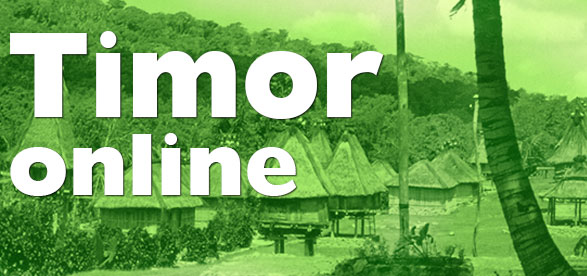CIDAC in Lisbon has digitised and made publicly available thousands of Timor archival documents.
We provide here a brief introduction to the collection contents and some preliminary observations on the search and access system of this marvellous addition to online archives about East Timor.
Established in 1974, CIDAC (Centro de Intervenção para o Desenvolvimento Amílcar Cabral) in Portugal has been a long-time centre for activism and advocacy in support of East Timorese self-determination and independence. CIDAC holds the documentary records of two internationally known Portuguese solidarity organisations, CDPM (Comissao para os Direitos do Povo Maubere) and APPTL (A Paz é Possível em Timor-Leste).CHART understands that CDPM, on ceasing its activities, committed to eventually housing its Timor documentary collection in a suitable repository in Timor-Leste. As an interim action, CIDAC has digitised some 10,000 items for universal access. According to the CIDAC website, the digitisation project was assisted with funding from the Fundação Calouste Gulbenkian.
Collection contents
Timor Online is a varied and rich collection of primary source documents and published materials – predominantly covering the years 1974-1999. It includes items written or created inside Timor before and during the occupation years as well as materials from the political Timorese diaspora and non-Timorese activists and non-government organisations world-wide.
One very valuable component of this digital library is comprehensive digital versions of some key activist newsletters from the occupation period. Titles include: Timor-Leste: Boletim de informação do CIDAC, Informações Timor-Leste & East Timor News – Monthly Memo (CDPM/APPTL), Funu (CDPM), Fitun (Estevão Cabral), East Timor News (CIET, Australia), Hadomi (Comunidade Timorense de Victoria), Informações (Gatimor / UDT), Kaibauk (UDT) and Nakroma (DFSE).*
Searching and access
Access to all documents is governed by a conventional library-type search screen. Three methods of searching are possible – simple, basic and advanced. After several hours of exploring the collection, CHART recommends the advanced search screen for most searches.
Whatever the search term and method used, the search result is a list of items in the digital library, arranged in alphabetical order by author/creator of the item. The system searches for terms in the descriptions of the items only – Author, Title, Date (year) etc – it does not look for words in the documents themselves. Digitised documents are presented in the widely-used PDF file format.
Initial observations
Some experimental searches are required to get a feel for the collection’s contents and the data used to describe the documents. CHART recommends the ‘detailed’ record format (see red arrow in graphic) for search results because it provides the best picture of each document’s descriptive data as well as providing a direct link to the document (if digitised; most are).
Subject headings: Headings have been assigned to all items. This can be a useful way to find related materials, but requires some search ‘tricks’ to be fully successful. For example, entering the term ‘Cruz Vermelha’ (Red Cross) in the ‘Subject’ box of the search screen produces no results, but entering (exactly!) the term ‘Organizacoes Internacionais- -Cruz Vermelha’ produces 107 items by or about Red Cross.
Alternately, using the term ‘Cruz Vermelha’ as a ‘sentence’ in the simple search screen produces 111 records by or about Red Cross. The same term used in the ‘Author’ field of the advanced screen produces no results but using the terms ‘ICRC-CICR’ or ‘Comite international de la croix-rouge’ in the Author field produces 20 items created by International Red Cross. [See this search results list for these latter items.]
These problems are common to many search systems and can be confusing. One way to help the searcher overcome them is to provide a browse-able list of subject headings and authors to aid accurate and productive searching.
PDF files: The provided PDF files are photographic images of the original materials and do not contain searchable text. Another notable aspect of the files is that some are quite large. For example, Issue 67 of CIET’s East Timor News is over 37Mb in size. This item takes several minutes to download from the Portugal-based server. It would be possible to significantly reduce the file sizes to speed up access.
Congratulations to CIDAC
The preparation of such a digitised set of documents is a formidable task. The task of then providing access over the internet presents a set of different challenges which CIDAC has had to face and do the best possible with available resources.
CHART offers its congratulations to CIDAC for doing this work. Timor Online is a marvellous addition to the online documentary record of East Timor’s recent history.**
Notes:
* For a list of all newsletters in Timor Online, enter the letters PER in the Call number field of the Advanced search screen.
** The other major easily accessible online collection is available through the Timorese Resistance Archive and Museum.
Many thanks to Luis Pinto for drawing our attention to CIDAC’s Timor Online.


